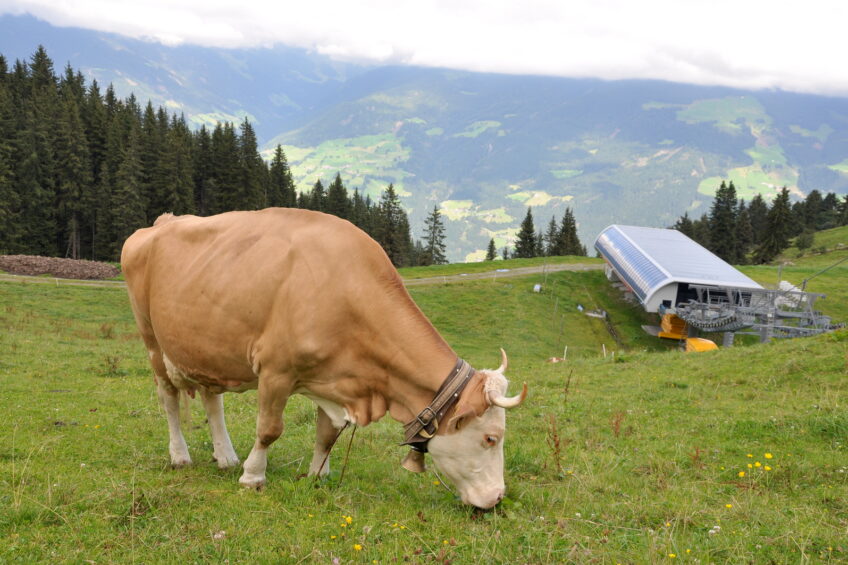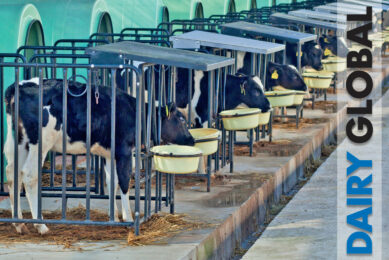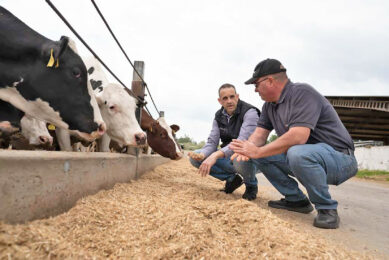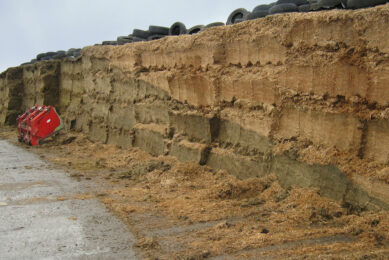Alpine farmers milking a good living

With only 17 Fleckvieh cows producing over 100,000 litres of specialty milk per year, the Hauser family in Austria are succeeding in a niche market. Six ?generations have evolved with this traditional ?method of dairy farming.
It’s hard to believe that dairy farmers throughout Europe are struggling to make a living from herds with hundreds of cows when some Austrian farmers can make a good living with less than 20 cows. A number of dairy farmers in different regions of the country are milking cows high up in the Alps and producing what is called hay milk or Heumilch, as it is known in the local language. Hay milk is produced without the use of silage or any fermented feed and is higher in Omega 3 and 6 fatty acids. It is not only good for consumers, it also produces better cheeses and chocolate and attracts bonuses for the small farmers who produce it.
Producing hay milk requires a very traditional method of dairy farming in Austria, as well as in some parts of Switzerland and France. In fact, cows kept according to this system are fed only sun-dried hay and some concentrates during the winter and just luscious meadow grass, clean water and fresh air during the summer grazing period.
The Hauser’s Alpine farm stands 1,600 metres above sea level and spreads over 22 hectares. The lower lying farm where the cows spend the winter has been refurbished to include a hay ventilation system and a motorised grab to help stack and unstack the hay after it dries.
Feeding the cows silage is prohibited and is closely monitored by ARGE Heumilch, an organisation set up to co-ordinate the hay milk producers and market their milk. Its passionate chairman is Karl Neuhofer, who keeps 80 cows for hay milk on his farm near Salzburg. Since 2004, ARGE Heumilch Austria has represented some 8,000 hay milk farmers and 60 milk processors and is number one in Austria when it comes to the production and marketing (since 2009) of hay milk.
Designated quality seal
Austria produces 3 billion litres of milk per year, 15% of which is produced as hay milk. This is much higher than the EU average of 3%. The principal hay milk areas in Austria are Vorarlberg, Tyrol, Salzburg, Upper Austria and Styria. This traditional manner of producing milk has been recognised by the European Union as deserving the quality seal ‘Traditional Speciality Guaranteed (TSG).’
This registration has almost been finalised and, consequently, hay milk is the first Austrian product permitted to carry this EU accolade.
As there is no fermented feeds in the cow’s diet, cheese can be produced without adding preservatives and without intensive mechanical treatment.
Producers receive a bonus of €0.05 per litre for hay milk and, if farmers farm organically, the bonus is an extra €0.15 per kilogram. In 2014, ARGE Heumilch generated €17 million of added value for Austria’s hay milk farmers.

Profile
Johann Hauser, son Franz Hauser, Julia Hauser, Helene and Max in Stummerberg im Zillertal, Austria
Company: Six generations of the Hauser family have produced hay milk on the farm, which lies 700m above sea level. Their 17 Fleckvieh cows produce over 100,000 litres of hay milk each year at a price of around €0.39 per litre. Their milk goes to the local dairy processor, but they do retain some milk at home to make Mozzarella cheese for their own consumption.
Family affair
Johann Hauser is a hay milk producer and chairman of the local farmers’ federation. He runs Rieshof mountain farm in Stummerberg im Zillertal. The farm not only supports Johann and his wife Rosa, but also his son Franz, daughter-in-law Julia, grandchildren Helene and Max, and his 87-year-old father Alois.
Franz is the sixth generation of the Hauser family to produce hay milk on the farm, which lies 700m above sea level. Their 17 Fleckvieh cows produce over 100,000 litres of hay milk each year at a price of around €0.39 per litre, thanks to the bonuses. This time last year, however, the price was averaging €0.50 per litre. Nearly all of their milk goes to the local dairy processor, but they do retain some milk at home to make Mozzarella cheese for their own consumption.
One of the unique traits of this farm is the fact that the 17 cows and 16 calves spend the summer on the Hauser’s Alpine farm Barenbadalm in Aschau/Zillertal, which lies 1,600 metres above sea level. This mountain farm sits neatly beside ski lifts and is spread over 22 hectares, while the home farm provides the winter milking accommodation and covers 8.5 hectares.
Johann or Franz have to travel the 16 kms up the mountain twice a day to milk the cows during the summer, but sometimes overnight in the small house that stands beside the milking barn. On the valley floor, the weather allows three harvests, with the last grass growing on the meadows used for autumn grazing.
Seasonal migration
This year’s Alp season, according to Johann Hauser, was once again “as desired,” but come October the cows will make the traditional trek walking down to the lowland farm. This walk, known as Almabtrieb, is scheduled for October 3, when the young family members decorate the cows with homemade headdresses and drive them down to the valley.
In 2012, the cattle barn on the Rieshof lowland farm was refurbished and a new hay shed added on top of it. On this occasion, a hay ventilation system was installed in the valley and on the mountain, which Johann describes as a great step forward.
Alpine farmers use specialist machinery to work the steep slopes of their land, including four-wheel drive, all-terrain vehicles with twin wheels. Even in the hay shed, they had a motorised grab fitted to the roof which helps stack and unstack the hay after it dries.
With only 17 cows and two milking barns, one on the lowland and one in the Alps, hay milk production has proven to work well for the three generations of the Hauser family that it supports.
Join 13,000+ subscribers
Subscribe to our newsletter to stay updated about all the need-to-know content in the dairy sector, two times a week.













